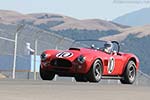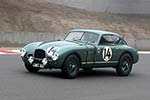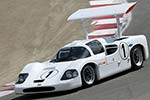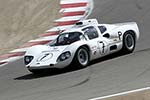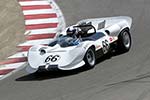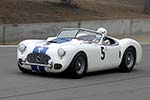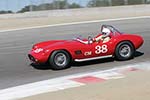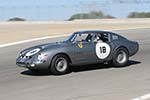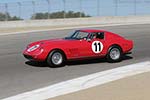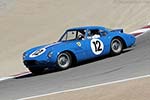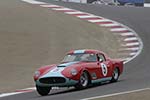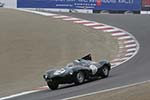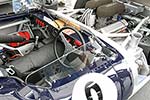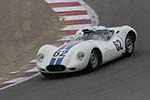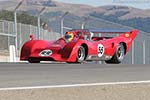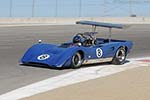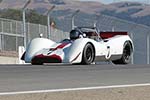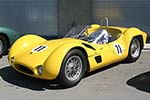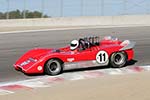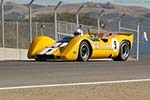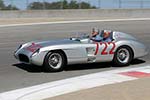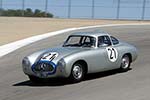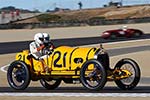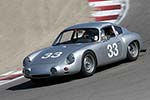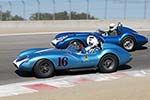 Introduction
Introduction
Organized for the 32nd consecutive year, the annual Monterey Historic Automobile Races at Laguna Seca is one of the most prestigious events of its kind. Compared to many European events the racing might not be as tightly competitive, but the �Historics� unique set of regulations always guarantee an exceptional field of cars. Just like in the Olympics, participation is more important than winning. Of the many rules the requirement to run the car in its original livery is one of the most interesting; a CanAm McLaren should be orange, not pink! As always a number of themes were celebrated throughout the weekend, highlighted by Stirling Moss in his Mille Miglia winning Mercedes Benz 300 SLR and Jim Hall with his revolutionary Chaparrals.
Great American Specials
The main feature of the 2005 Historics was the celebration of the Great American Specials, which dominated American road racing in the 1950s and 1960s and gave birth to some of the country�s biggest names. The introduction of the versatile OHV V8 engines after the War offered the amature racers a powerful yet cheap powerplant for their garage specials. These creations did not only look the part, they also received a wide variety of names like Ol� Yeller, Old Grey Mare, Cannon or Monsterati. One of the first of these to make it to Europe was Briggs Cunningham�s unique streamlined Cadillac, famously nick-named �Le Monstre� by the French when it campaigned at Le Mans. Cunningham returned the following years with cars bearing his own and came closer to winning than any American manufacturer had done before or would do for another decade. In the second half of the 1950s a small shop in California headed by Dick Troutman and Tom Barman produced some of the most successful racers. After building a prototype under their own name, the former hot-rodders were hired by Lance Reventlow to build his famous Scarabs and a few years later they built the first Chaparrals. The days of the American Special were numbered when the CanAm Challenge series debuted in 1966. The continent flooded with British racers dominating the series from day one. Jim Hall and his ingenious Chaparrals were the only mentionable competition to the Lolas and McLarens. Spread over the various groups the wild bunch that were the American Specials were out on the track all weekend, topped off by a group dedicated to CanAm cars from 1966 to 1971 on Saturday and TransAm cars of the same era on Sunday.
Jim Hall and his Chaparrals
One of the most influential racing car designers of the 1960s is Jim Hall whose mid-engined Chaparrals completely changed the perception of aerodynamics. It all started with a small air-dam on the front engined Chaparrals and ended a decade later with the ground-effects 2J �Sucker-Car.� In the years between these virgin white racers were the first to be equipped with a rear wing, which was actively adjustable in pitch to reduce drag on the straights and increase downforce in the corners. Very often pioneering racing cars are not very competitive, but Jim Hall managed to make his often odd looking vehicles very quick. In its four races entered, the controversial 2J recorded a fastest lap in the first and the pole position in the next three. In the years before the CanAm series (1963-1965), the slightly more conventional 2A dominated American road racing. After the European invasion, Chaparral only managed to record one victory on American soil. In Europe fixed head version Chaparrals scored a victory in two World Championship races; one at the legendary Nurburgring in 1966 and the other a year later at Brands Hatch. After the 2J was banned for having "moveable aerodynamic devices", Jim Hall withdrew from CanAm racing. He later made a return to motorsport, which culminated in a victory in the 1980 Indy 500.
In the following years Hall carefully restored the remaining mid-engined chassis to create an almost complete line-up. This was quite a task because many of the chassis were used for various evolutions of the 2-series. He brought all six of the restored cars to Laguna Seca to be displayed in the paddock and demonstrated by himself and other former drivers like Phil Hill and Vic Elford. It was a fitting tribute to one of the greatest innovators of the sport who ranks right up there with people like Colin Chapman and John Cooper. Coincidently the latter will be honoured in next year�s event.
Mercedes Benz 300 SLR �722�
When a young Stirling Moss tore through the Italian countryside in April 1955, he could have never dreamed that this ten hour run would be celebrated over and over. It was of course his epic victory in the Mille Miglia in a record breaking time which was so very well described in Motorsport Magazine by his co-driver Dennis Jenkinson. Since then Mercedes Benz have displayed and demonstrated the winning 300 SLR #722 at events all over the world. This year they promised to finally retire the car in their new museum after the Mille Miglia revival earlier this year and then repeated the statement again after the Goodwood Festival of Speed two months later. Fortunately they changed their minds once more and brought the car to the Monterey Peninsula to have it demonstrated in the Historic Races and shown at the Pebble Beach Concours. Moss was on hand to give talk show host Jay Leno the ride of his life around the Laguna Seca track.
Tight schedule
The annual Monterey Peninsula automotive extravaganza consists of half a dozen events all organized on the same four days. On all of these days there is activity on and around the track with a photoshoot on Thursday, practice sessions on Friday and races on Saturday and Sunday. The fourteen classes are divided in two groups of seven: the A group races on Saturday and the B group on Sunday. We captured all of the Saturday action and Rob flew over from The Quail lodge by helicopter to get some shots of the B group practice sessions on Friday.
All of this can be explored in our
220 shot slideshow, which includes the various displays, demonstration runs and of course the races.

| |
|
| |
|
|
|
|
| |
|
|
|
|
| |
|
|
|
|
| |
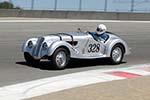
|
|
|
BMW 328 Roadster
|
60

|
| Years of production: |
1936 - 1940 |
| Last updated: |
05 / 21 / 2008 |
|
|
|
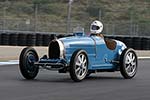
|
|
|
Bugatti Type 35C
|
71

|
| Years of production: |
1926 - 1930 |
| Last updated: |
05 / 02 / 2007 |
|
|
| |
|
|
|
|
| |
|
|
|
|
| |
|
|
|
|
| |
|
|
|

|
|
|
ERA R2A
|
6

|
| Produced in: |
1934 |
| Last updated: |
02 / 13 / 2006 |
|
|
| |
|
|
|
|
| |
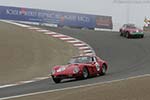
|
|
|
Ferrari 250 GTO
|
536

|
| Years of production: |
1962 - 1963 |
| Last updated: |
12 / 07 / 2015 |
|
|
|
|
| |
|
|
|
|
| |
|
|
|
|
| |
|
|
|
|
| |
|
|
|
|
| |
|
|
|
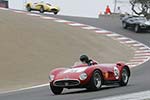
|
|
|
Maserati 300S
|
482

|
| Years of production: |
1955 - 1958 |
| Last updated: |
11 / 10 / 2014 |
|
|
| |
|
|
|
|
| |
|
|
|
|
| |
|
|
|
|
| |
|
|
|
|
| |
|
|
|
|
| |

 Introduction
Introduction


